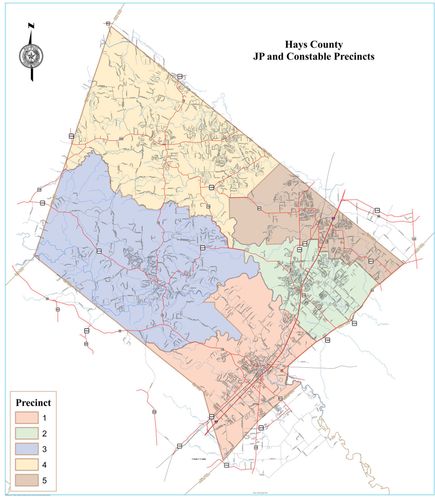Report on a Conservation Initiative in Southwest Utah and its Alignment with Sustainable Development Goals
Introduction: Addressing Biodiversity Loss in Alignment with SDG 15
A collaborative conservation program is underway in southwest Utah’s Zion Unit to mitigate a primary threat to endangered wildlife, directly supporting the objectives of Sustainable Development Goal 15 (Life on Land). The initiative, a partnership between the Utah Division of Wildlife Resources and The Peregrine Fund, incentivizes hunters to adopt practices that protect the critically endangered California condor and other scavenger species from lead poisoning. This report details the program’s structure, objectives, and its contribution to global sustainability targets.
The Conservation Challenge: Threats to SDG Target 15.5
The California condor population faces significant threats that jeopardize progress toward SDG Target 15.5, which calls for urgent action to halt biodiversity loss and prevent the extinction of threatened species. The primary challenges within the Utah-Arizona region include:
- Lead Poisoning: Identified as the leading cause of mortality for free-flying condors, lead poisoning from ammunition fragments in animal remains directly undermines conservation efforts. The recent death of a celebrated condor, 1K, was attributed to this cause.
- Compounding Factors: The Utah-Arizona condor flock has been further reduced by an outbreak of highly pathogenic avian influenza and illegal poaching incidents, highlighting the fragility of the population and the need for comprehensive action in line with SDG 15.7 (end poaching).
- Population Decline: These combined pressures have resulted in a significant reduction of the local flock, from 116 birds in 2022 to a recent count of 87, representing a serious setback for the species’ recovery.
Program Framework: A Partnership for the Goals (SDG 17)
The “Hunters Helping Condors” initiative exemplifies a multi-stakeholder partnership as encouraged by SDG 17 (Partnerships for the Goals). It engages the hunting community as crucial partners in conservation through a system of incentives. The program’s operational details are as follows:
- Target Audience: The program is directed at big game permit holders hunting within the Zion Unit, which overlaps with the condor’s primary habitat.
- Incentive Structure: To encourage participation, hunters are offered coupons for free or discounted lead-free ammunition. Furthermore, they can enter a drawing for an $800 gift card, donated by The Peregrine Fund.
- Participation Requirements: To qualify for the prize drawing, hunters must present their lead-free ammunition or provide proof of having removed the entire harvested animal’s remains from the field at designated check stations.
- Collaborative Effort: The program is a joint effort between a state agency (Utah Division of Wildlife Resources) and a non-governmental organization (The Peregrine Fund), demonstrating an effective public-private partnership model.
Advancing Responsible Consumption and Production (SDG 12)
This initiative actively promotes the principles of SDG 12 (Responsible Consumption and Production) by encouraging a shift away from a hazardous product. By incentivizing the use of non-lead ammunition, the program directly contributes to SDG Target 12.4, which aims for the environmentally sound management of chemicals and the reduction of their release into the environment. This transition prevents the toxic heavy metal from entering the food chain, thereby minimizing its adverse impact on wildlife and the terrestrial ecosystem.
Conclusion: A Model for Local Action on Global Goals
The Utah-based hunter incentive program serves as a functional model for achieving global sustainability targets through localized, community-focused action. By directly addressing the primary driver of California condor mortality, the initiative makes a significant contribution to SDG 15 (Life on Land). Through its collaborative framework (SDG 17) and its promotion of safer alternatives (SDG 12), the program demonstrates that hunters can be at the forefront of wildlife conservation, playing a vital role in protecting biodiversity for future generations.
1. Which SDGs are addressed or connected to the issues highlighted in the article?
The article primarily addresses issues related to Sustainable Development Goal 15 (Life on Land) and also connects to Sustainable Development Goal 12 (Responsible Consumption and Production).
-
SDG 15: Life on Land
This is the most relevant SDG as the article’s central theme is the conservation of the California condor, a critically endangered species. The text details efforts to protect this species from threats like lead poisoning and poaching, halt biodiversity loss, and manage wildlife resources sustainably. The “Hunters Helping Condors” program is a direct action aimed at protecting terrestrial ecosystems and the species within them.
-
SDG 12: Responsible Consumption and Production
This SDG is relevant because the article discusses a program designed to change consumption patterns among hunters. By incentivizing the switch from traditional lead ammunition to lead-free alternatives, the program promotes a more responsible and sustainable form of consumption. This change directly reduces the release of a harmful chemical (lead) into the environment, aligning with the goal of environmentally sound management of chemicals and waste.
2. What specific targets under those SDGs can be identified based on the article’s content?
Based on the article, several specific targets under SDG 15 and SDG 12 can be identified:
-
SDG 15: Life on Land
- Target 15.5: “Take urgent and significant action to reduce the degradation of natural habitats, halt the loss of biodiversity and, by 2020, protect and prevent the extinction of threatened species.” The article is entirely focused on this target. It describes the California condor as an endangered species that was pushed “to the brink of extinction” and details the ongoing conservation efforts, such as the captive breeding program and the lead-free ammunition initiative, to protect it and prevent further deaths.
- Target 15.7: “Take urgent action to end poaching and trafficking of protected species of flora and fauna…” The article explicitly mentions that “a pair of recent poaching cases” have negatively impacted the Utah-Arizona condor flock, directly highlighting the relevance of this target.
-
SDG 12: Responsible Consumption and Production
- Target 12.4: “By 2020, achieve the environmentally sound management of chemicals and all wastes throughout their life cycle… and significantly reduce their release to… soil in order to minimize their adverse impacts on… the environment.” The program’s goal is to stop hunters from leaving lead-laced animal remains in the field. Lead from ammunition is a chemical waste, and the initiative to switch to non-lead alternatives is a direct effort to reduce its release into the environment and prevent its “secondary impacts to scavenging wildlife.”
- Target 12.8: “By 2030, ensure that people everywhere have the relevant information and awareness for sustainable development and lifestyles in harmony with nature.” The “Hunters Helping Condors” program, which provides incentives and information to hunters, is an awareness campaign. It aims to educate a specific group about how their choices impact wildlife and encourage a more sustainable lifestyle that is “in harmony with nature.”
3. Are there any indicators mentioned or implied in the article that can be used to measure progress towards the identified targets?
Yes, the article mentions and implies several quantitative and qualitative indicators that can be used to measure progress.
-
Indicators for SDG 15 Targets
- Population counts of endangered species: The article provides specific numbers that serve as direct indicators of the California condor’s status. These include the historic low (“22 condors… in the wild globally by 1982”), the current global population (“over 500 birds globally today”), and the local flock’s population change (“reducing its overall count from 116 in 2022 to 87 at the latest count”).
- Mortality rates and causes: The article indicates that “lead poisoning is the leading cause of death for free-flying condors” and notes that “over 50 condors from the Utah-Arizona flock to die of lead poisoning since 1996.” Tracking the number and cause of deaths is a key indicator of the effectiveness of conservation measures.
- Number of poaching incidents: The mention of “a pair of recent poaching cases” serves as an indicator for Target 15.7. A reduction in the number of such reported cases would indicate progress.
-
Indicators for SDG 12 Targets
- Uptake of sustainable alternatives: An implied indicator is the number or percentage of hunters in the Zion Unit who participate in the program by using lead-free ammunition. The success of the incentive program (gift cards and coupons) can be measured by how many hunters make the switch.
- Reduction in environmental contamination: While not directly measured in the article, a key indicator for Target 12.4 would be a decrease in the incidence of lead poisoning in condors and other scavengers. This would demonstrate a successful reduction in the release of lead into the ecosystem.
4. Create a table with three columns titled ‘SDGs, Targets and Indicators” to present the findings from analyzing the article.
| SDGs | Targets | Indicators |
|---|---|---|
| SDG 15: Life on Land | 15.5: Protect and prevent the extinction of threatened species. |
|
| SDG 15: Life on Land | 15.7: Take urgent action to end poaching. |
|
| SDG 12: Responsible Consumption and Production | 12.4: Achieve environmentally sound management of chemicals and wastes. |
|
| SDG 12: Responsible Consumption and Production | 12.8: Ensure people have relevant information and awareness for sustainable lifestyles. |
|
Source: ksl.com







